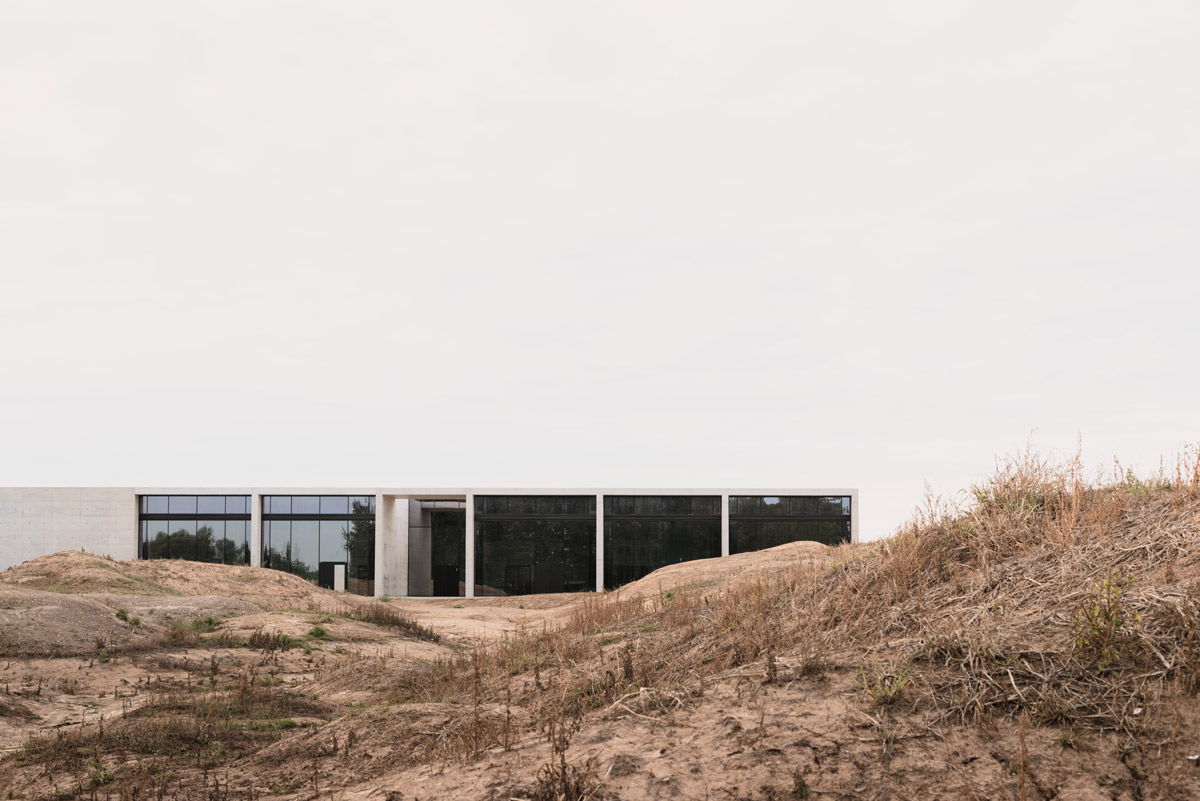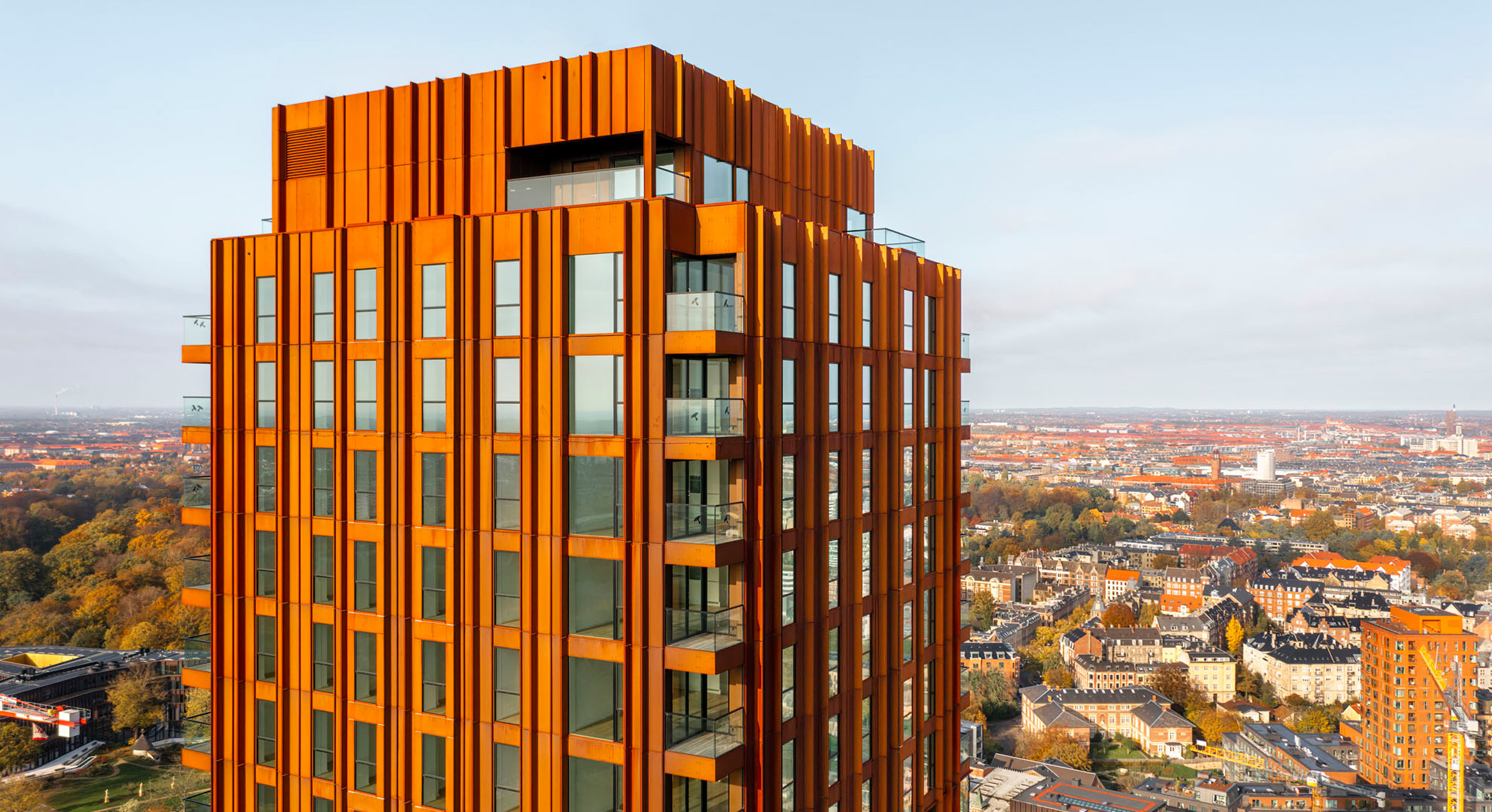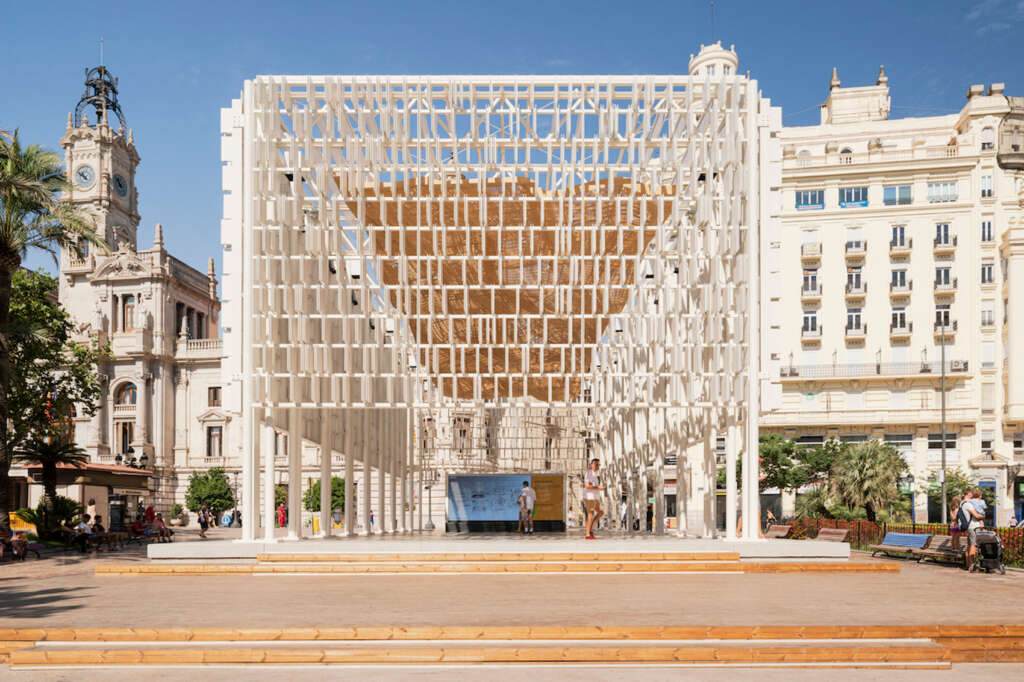
Agora Valencia
Architect: Miguel Arraiz + Arqueha
Location: Valencia, Spain
Type: Pavilion
Year: 2022
Photographs: David Zarzoso
- A varied program of activities will take place in this venue right in the heart of the city, to make design known to the public. Workshops, meetings, round tables and presentations that are added to the official program of World Design Capital Valencia 2022 in the center of the city.
- Miguel Arraiz, architect and project director of World Design Capital Valencia 2022, is responsible for the architectural project of Agora Valencia together with Arqueha Arquitectura y Urbanismo.
- Design takes the heart of Valencia with a participatory and inclusive venue, built with ceramics and “vareta”, providing its interior with thermal comfort and relating the venue to the Valencian industry.
- As a vehicle and promoter of the democratization of design, the venue hosts activities open to all audiences, the ecosystem of professionals, entities and companies with the aim of involving all citizens in design throughout the year.
Coinciding with its official opening to the public after two months of works in the Plaza del Ayuntamiento, Agora Valencia has unveiled today its own calendar of transversal activities for all audiences that will keep it alive as a link between citizens and the design capital. It will be from the heart of the city that these new activities will be carried out and that will be added to the more than 200 already programmed initiatives among workshops, exhibitions, conferences and meetings throughout the Valencia Region.
The following description is courtesy of the architects. Agora Valencia is a project of World Design Capital Valencia 2022 and the Valencia City Council, which has the support of the Provincial Council of Valencia, La Marina de València and the companies Inalco, Wandegar and iGuzzini, and takes over from the pavilions that back in the day they were built in other capitals such as Helsinki or Taipei.
Miguel Arraiz, architect, creator and project director of World Design Capital Valencia 2022, is responsible for the architectural project of Agora Valencia, together with Arqueha Arquitectura y Urbanismo, in charge of technical development, and with the advice of Cosín Estudio.
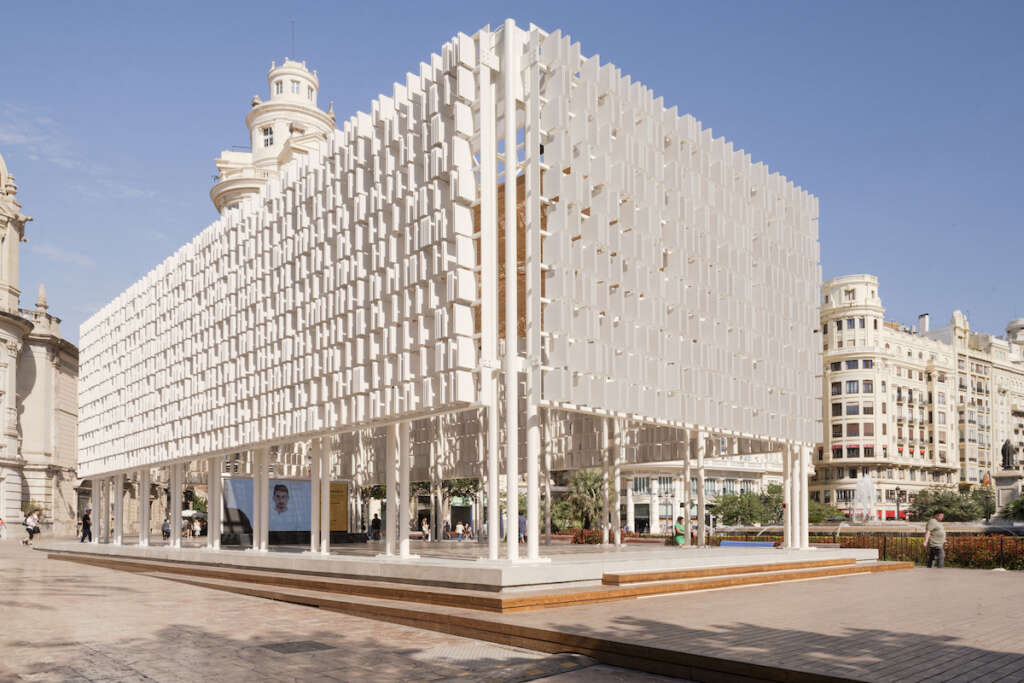
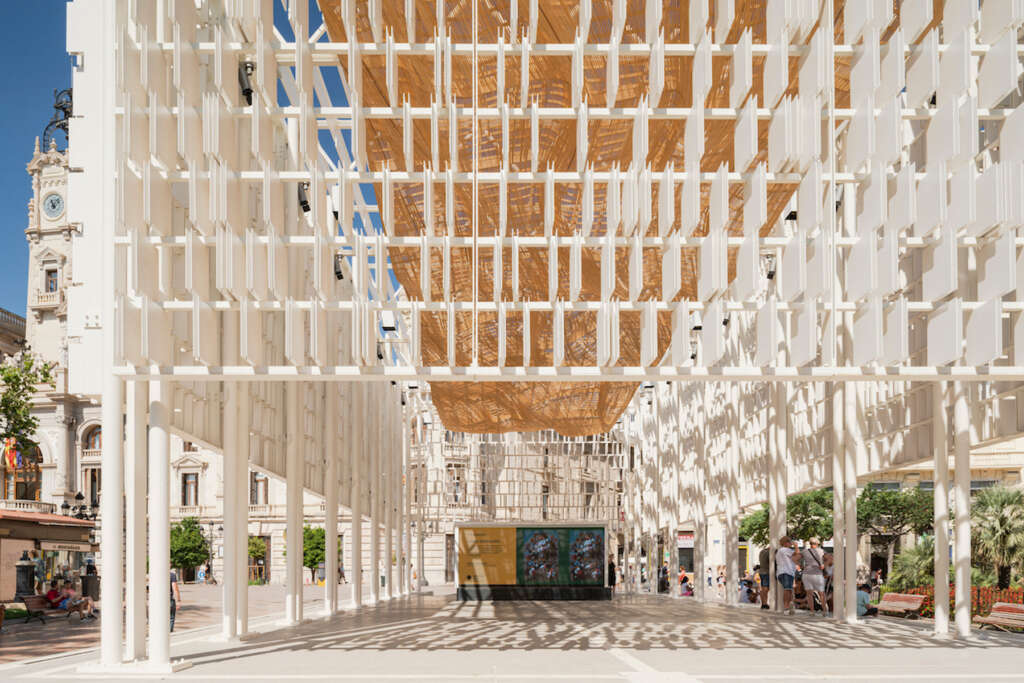
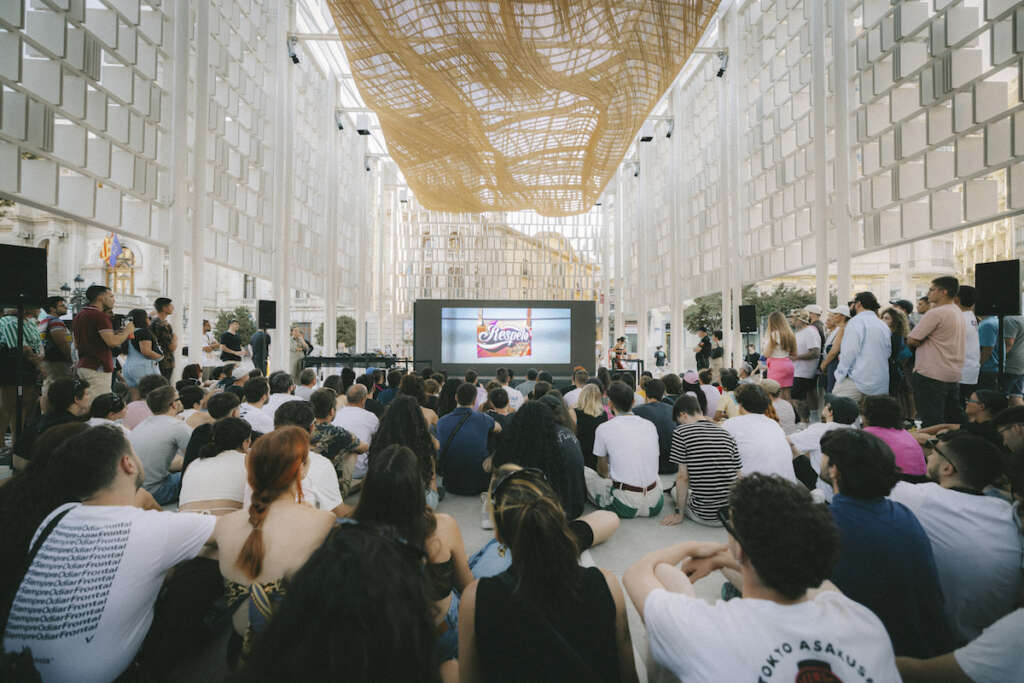
The purpose of Agora Valencia is reflected in the materials and manufacturing of the venue and in its construction, which fuses tradition and avant-garde, crafts and industry, using only wooden rods and a material similar to ceramics known as MDi. The construction of the pavilion has seen the participation of companies such as Inalco, Wandegar and iGuzzini, and studios and professionals such as Manolo García Carpintería Artística, Radiante Creative Studio, ATG Desarrollos, Josep Martí and Quatre Caps.
With the opening of Agora Valencia, the city celebrates with its inhabitants and visitors its status as the global epicenter of design, and gains a new venue open to citizens as a legacy of the transformative force of design. A place open to all of society designed to bring design and creative talent from the entire Valencia Region closer to the general public.
At the opening ceremony, Mayor Joan Ribó stated that: “Starting today, our Plaza del Ayuntamiento has a new building to admire and enjoy. Agora Valencia tells a lot about what we are, with an architecture that speaks of the Valencian industry through its ceramics, of the waves of the sea through its roof, which is, in turn, a tribute to our festivals: the Fallas. A place of shade and meeting, of comfort and information, where its design invites everyone who passes by to make it their own. A space that also offers the first shade of the square. Moreover, its design and architecture, the materials that compose it, guarantee a much more pleasant thermal sensation than in the rest of the square.”
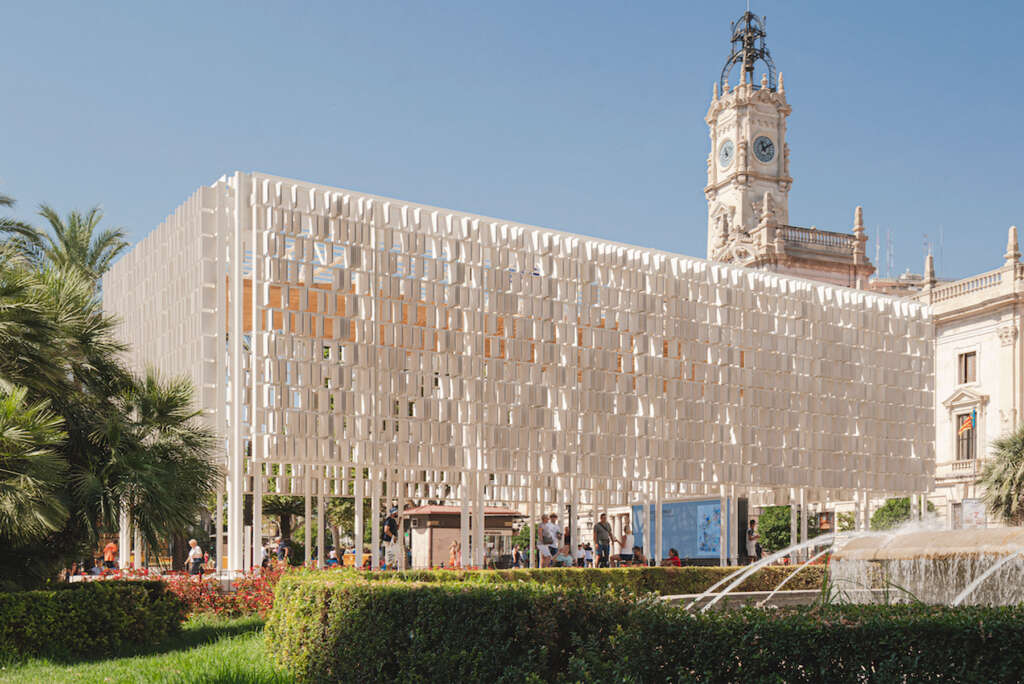
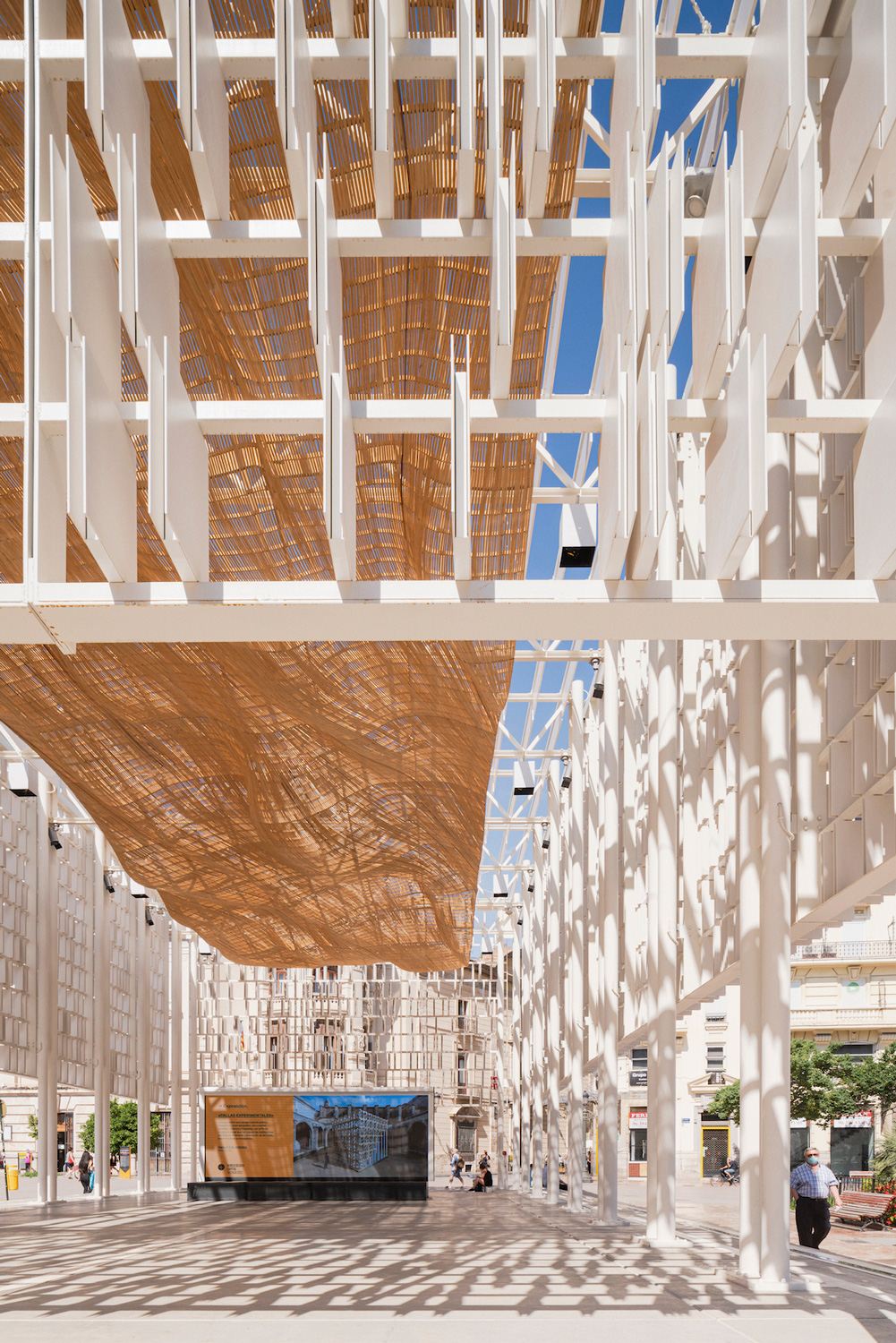
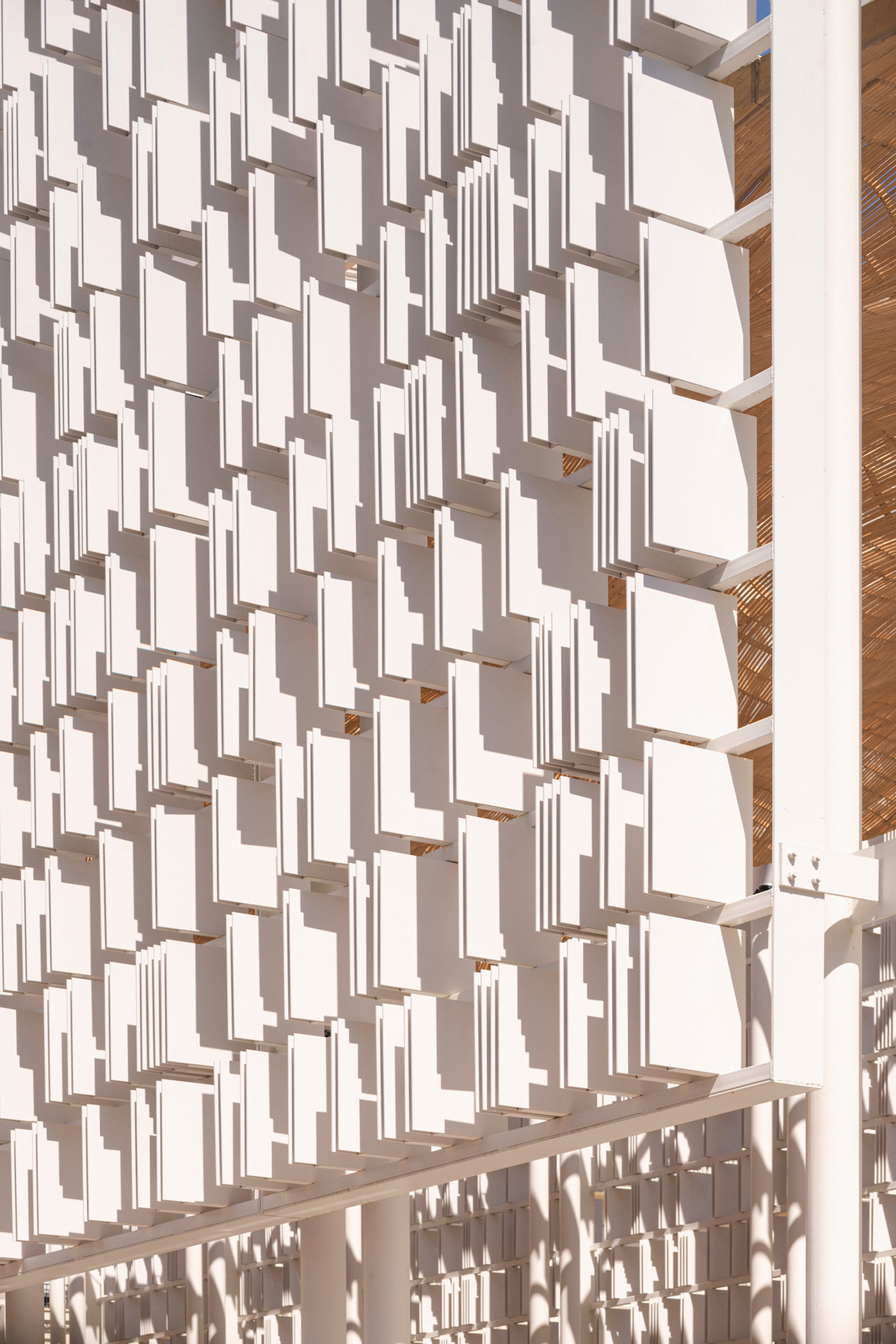
Valencian Craftsmanship, Innovation, Light and Talent, Axes of the Architectural Project
“From the beginning we presented the project as a gift for the present and future of Valencia, putting people at the center”, explained Miguel Arraiz. “In this unique opportunity to bring design and its transversality closer to citizens, companies and institutions, Agora Valencia investigates the materials and the craft tradition of our territory. In addition to extolling the Valencian roots, which describe a way of doing things, the materials and construction systems that allow the modular and removable format of the pavilion constitute a determined commitment to circularity and durability.”
With an area of 350 square meters, this modular pavilion tells the story of a renowned design born on the shores of the Mediterranean, of materials arising from ceramic innovation and traditions such as the “vareta” by the artist Manolo García.
Located in the Plaza del Ayuntamiento, Àgora València consists of a structure with dimensions in plan of 24 by 10 meters and a height of 9 meters.
Arqueha studio, coordinator of Plan Zero for the climate transition of three neighborhoods in the city of Valencia, has been in charge of carrying out the technical development of the project applying prefabrication and sustainability parameters. With the use of digitization through the BIM methodology, together with parametric design, it has been possible to solve all the components of the building in an industrialized way, making each of the frames that support the slats unique, prefabricated and removable.
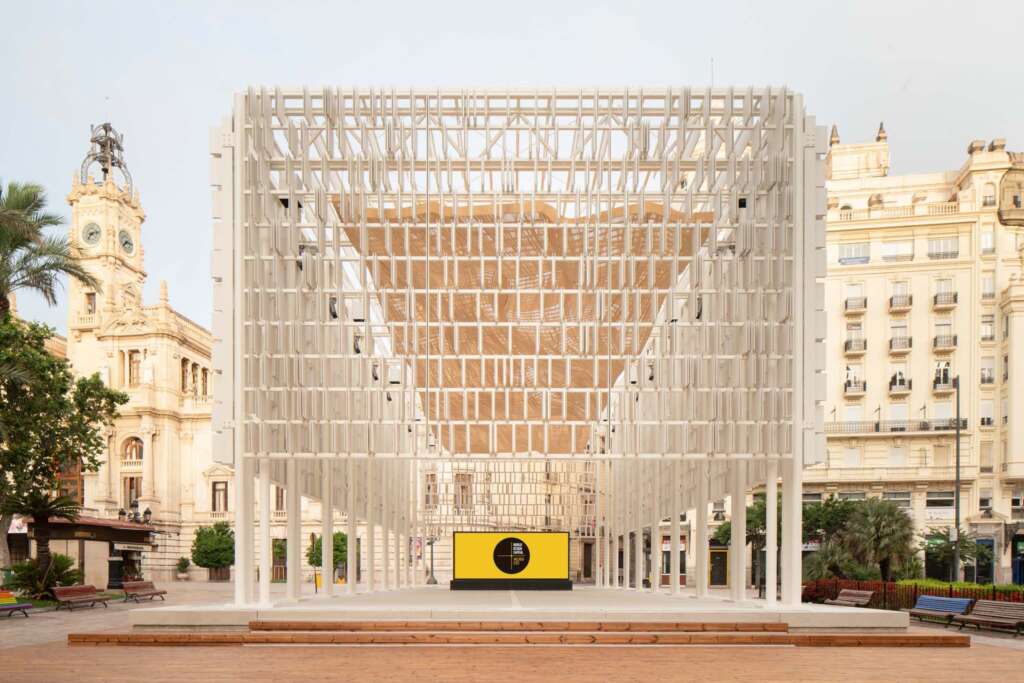
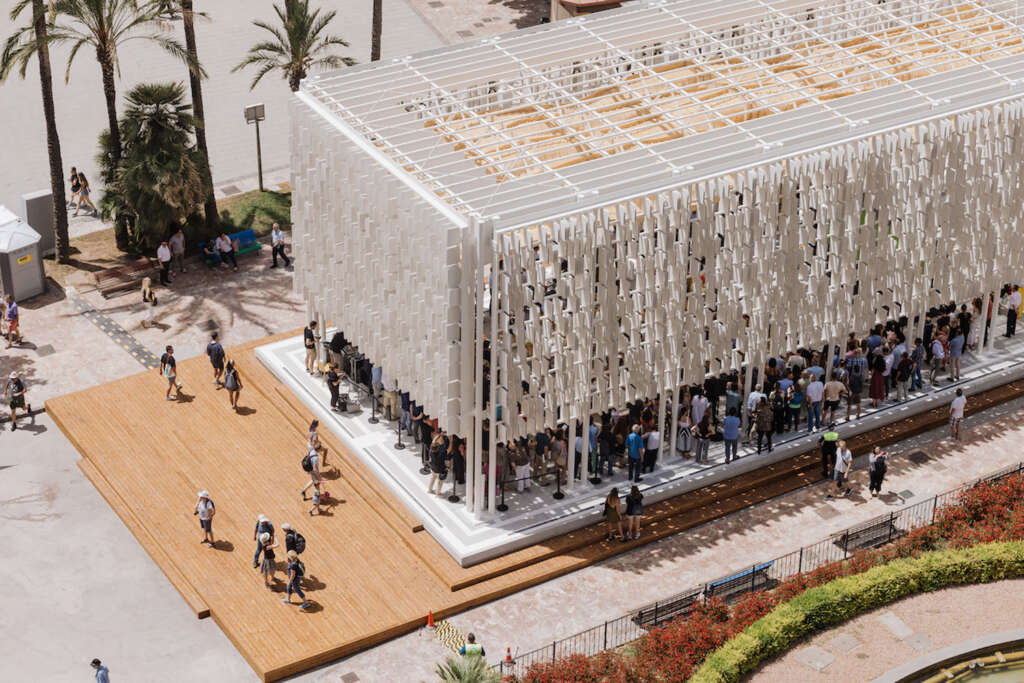
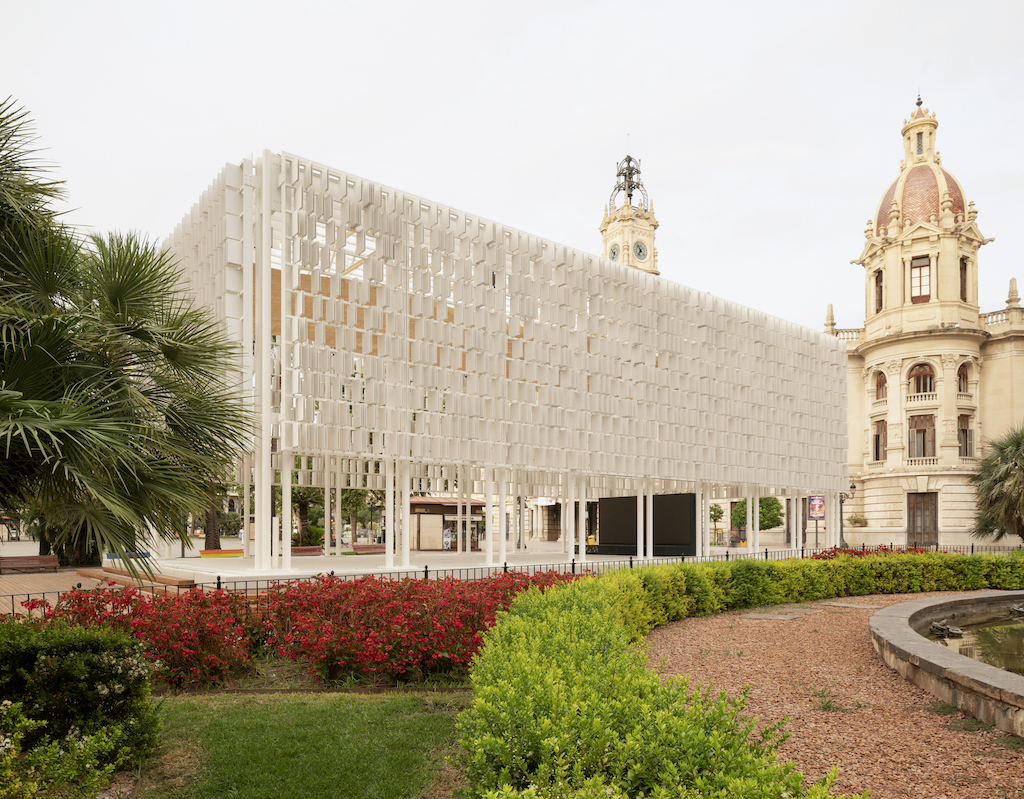
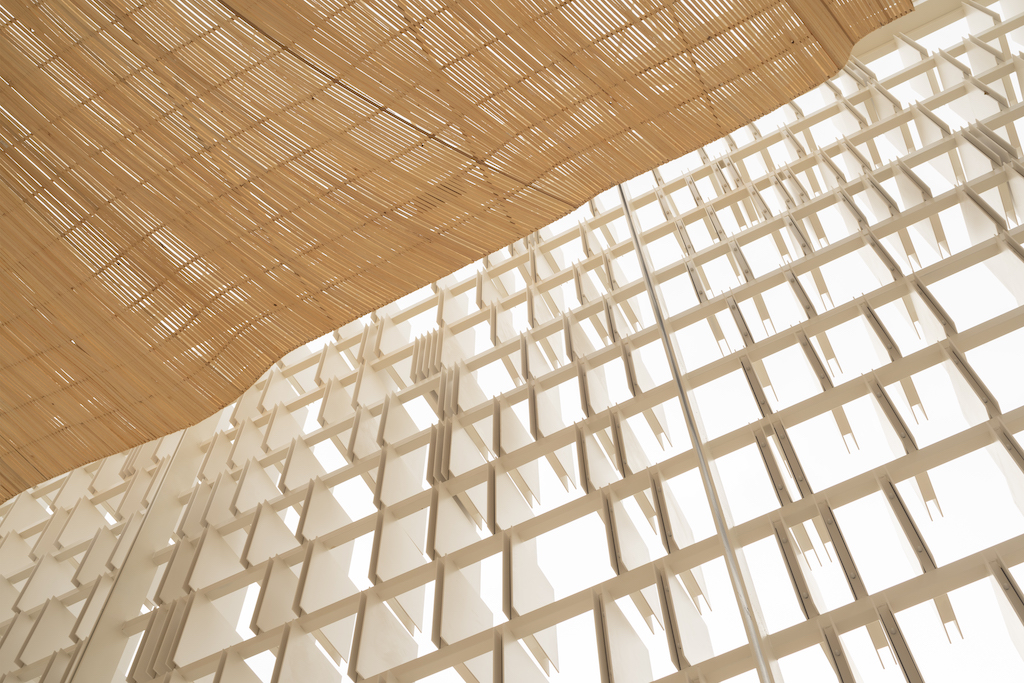
The design, technical development and construction have had to be carried out in record time. With a construction of two months, the use of digital tools and prefabrication have played a leading role in a project that defines the future of construction, digitized, industrialized and sustainable.
To do this, different digital tools have been implemented with the aim of increasing the number of prefabrication processes, while maintaining the original design of the building. The use of parametric design applied to the enclosure has provided the ability to generate a fully controlled distribution of slats, choosing the density and position of each one of them in the racks, obtaining a unique design for each rack. Together with the parametric design, the BIM methodology has been used, ensuring that each element has the necessary properties to enable its prefabrication, saving costs, materials and time in the construction of the pavilion. Thanks to these processes, the waste generated, the work carried out and the transport of materials have been reduced, saving large amounts of CO2 and energy.
Àgora València is also a space studied following thermal comfort strategies. Its design takes into account climatic variables such as air circulation and solar radiation and directly influences the improvement of the feeling of comfort in relation to the rest of the square. The solar protection formed by the skin of vertical slats manages to reduce the amount of solar radiation coming from the east and west, while the wooden roof acts in a similar way with the light coming from the south, allowing in any case the natural ventilation of the building. The sum of solar protection and ventilation manage to lower the comfort temperature inside the pavilion by up to 10 degrees compared to any other point in the square, and all this without energy input and therefore with 0 CO2 emissions.
The piece of brace that roofs the pavilion is made by Manolo García, master carpentry and Fallas artist who returns to the square where he has “planted” his creations so many times. This element simulates the waves of the Mediterranean Sea in reference to the city as a historical point of union between different cultures.
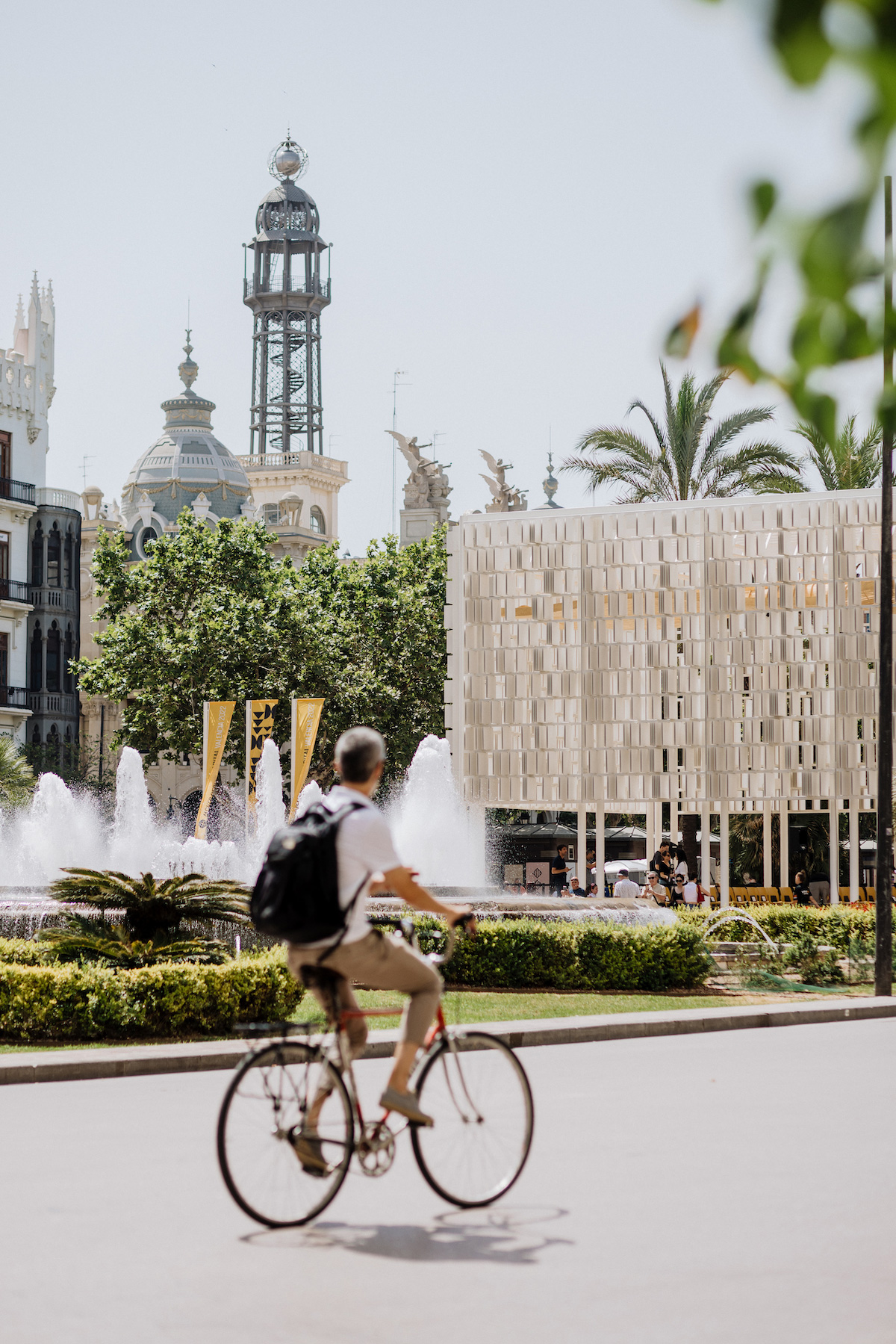
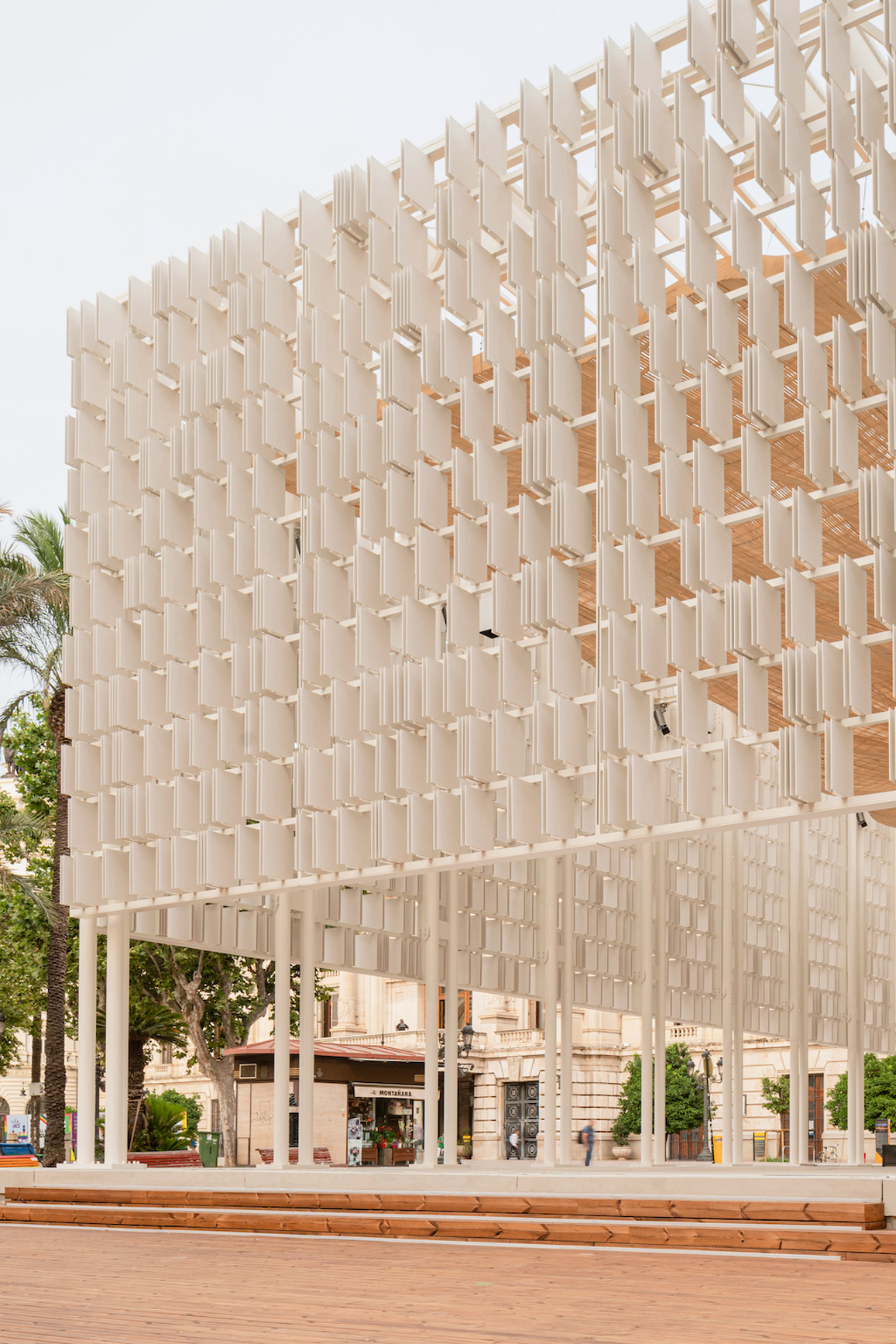
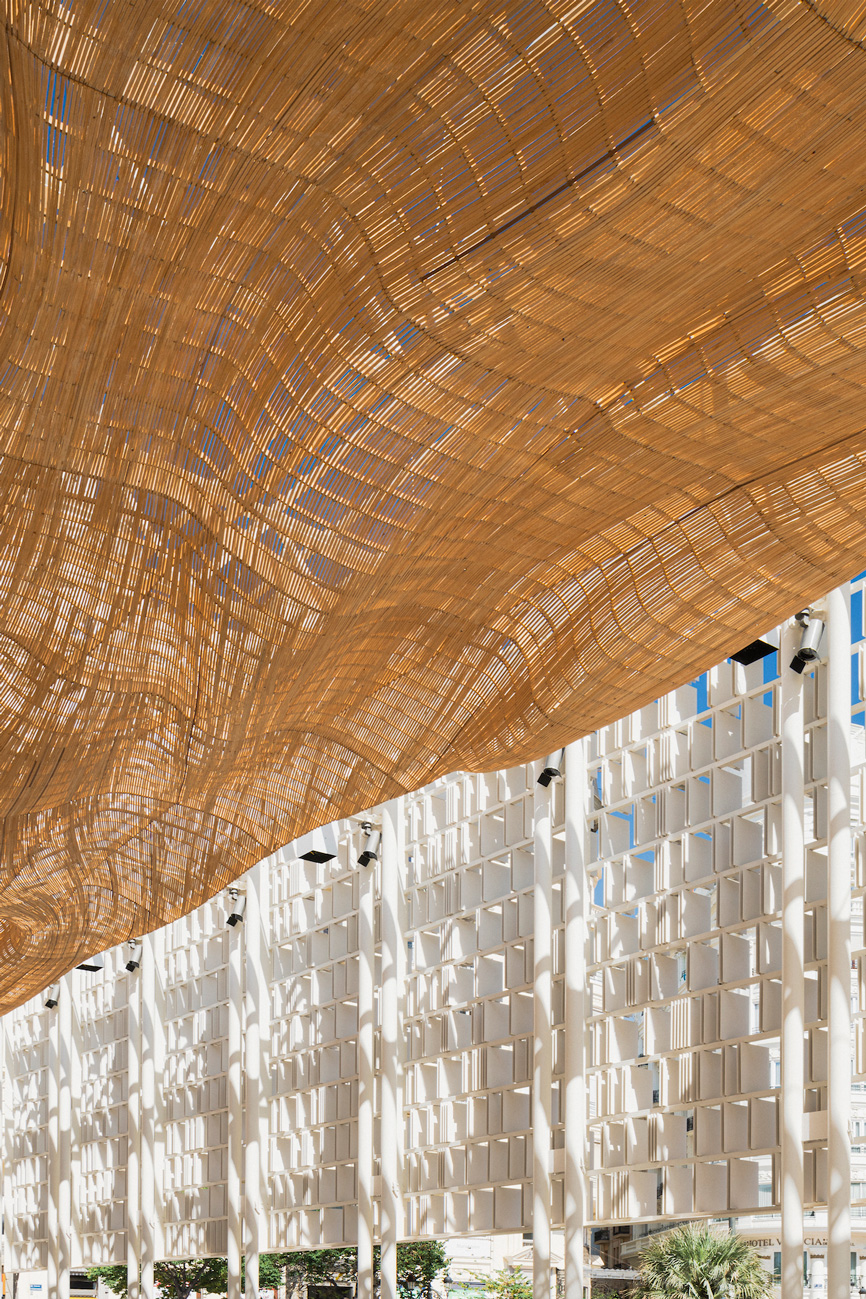
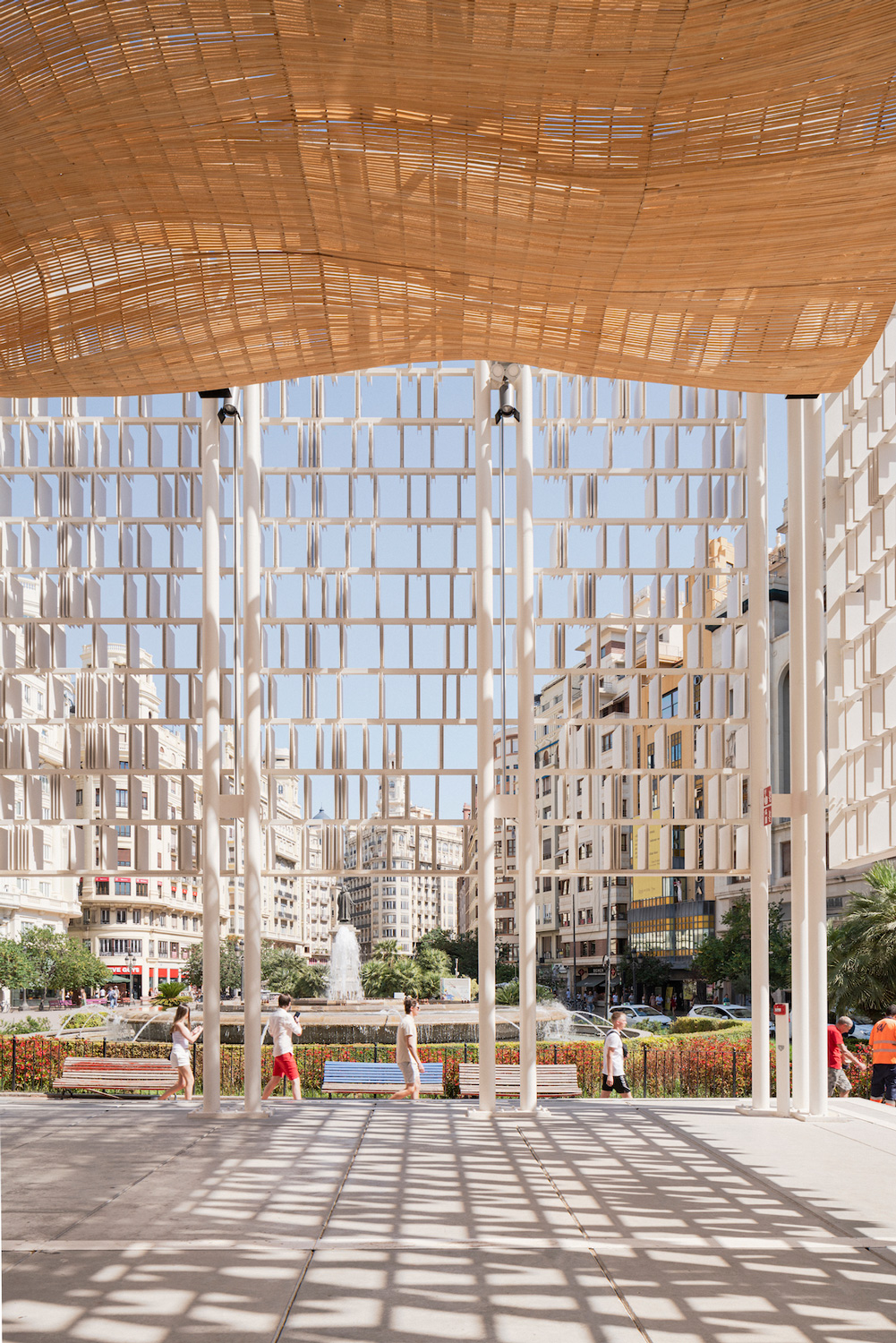
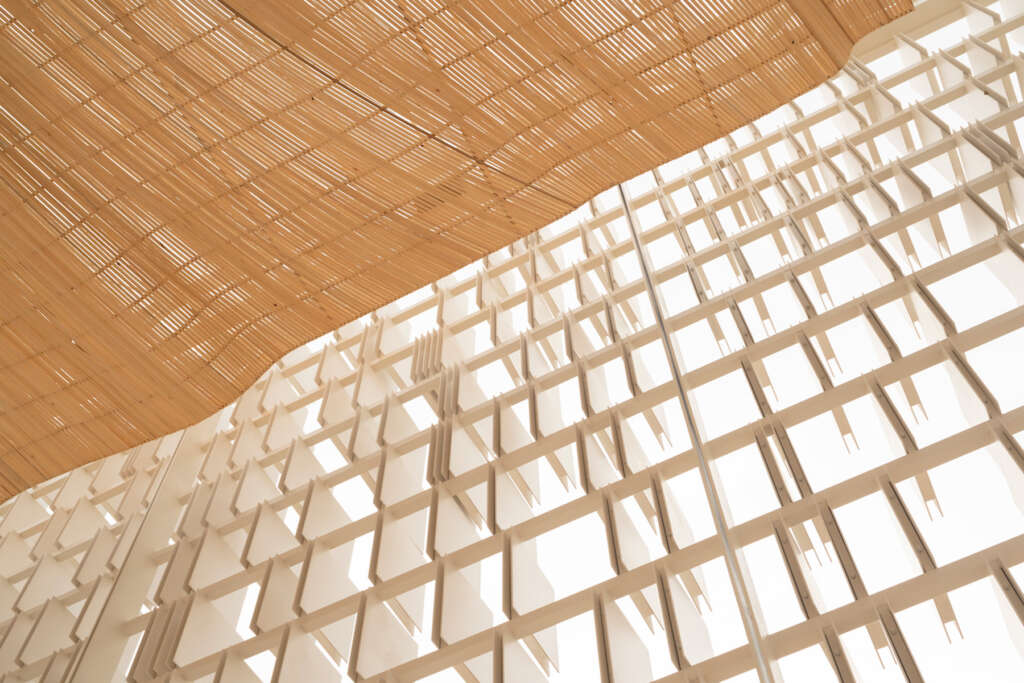
The building is covered with a skin developed by the companies Inalco and Wandegar from pieces of MDI placed perpendicularly on the façade to sift the light over the hours. In fact, light has been treated as one more construction material, and other elements such as the upper deck, of great aesthetic power, also contribute to this. The piece of brace that roofs the pavilion is made by Manolo García, master carpentry and Fallas artist who returns to the square where he has planted his creations so many times. This element simulates the waves of the Mediterranean Sea in reference to the city as a historical point of union between different cultures.
The Inalco signature is present on the façade and ceiling, designed with MDi from the Silk Blanco collection. MDi (Minerals, Design, Innovation) is an innovative surface, developed with the purest minerals, which allows body and surface to present total aesthetic continuity. MDi is a sustainable product as it is formulated with 50% recycled material from its own process. Likewise, its Full Digital technology, unique in its sector worldwide, saves 70% of water and avoids the use of solvents.
For its part, the engineering company for innovative technical applications for ceramic ceilings Wandegar has faced the Àgora València project as a real challenge, for which it has devised an architectural envelope solution that stands out for its simplicity and lightness without compromising safety or the modularity of the format.
Every evening from June 29, an artistic and immersive lighting installation created by the Radiante creative studio will turn the pavilion into a great lighthouse as a symbol of the pride of the entire city of Valencia for being the World Design Capital.
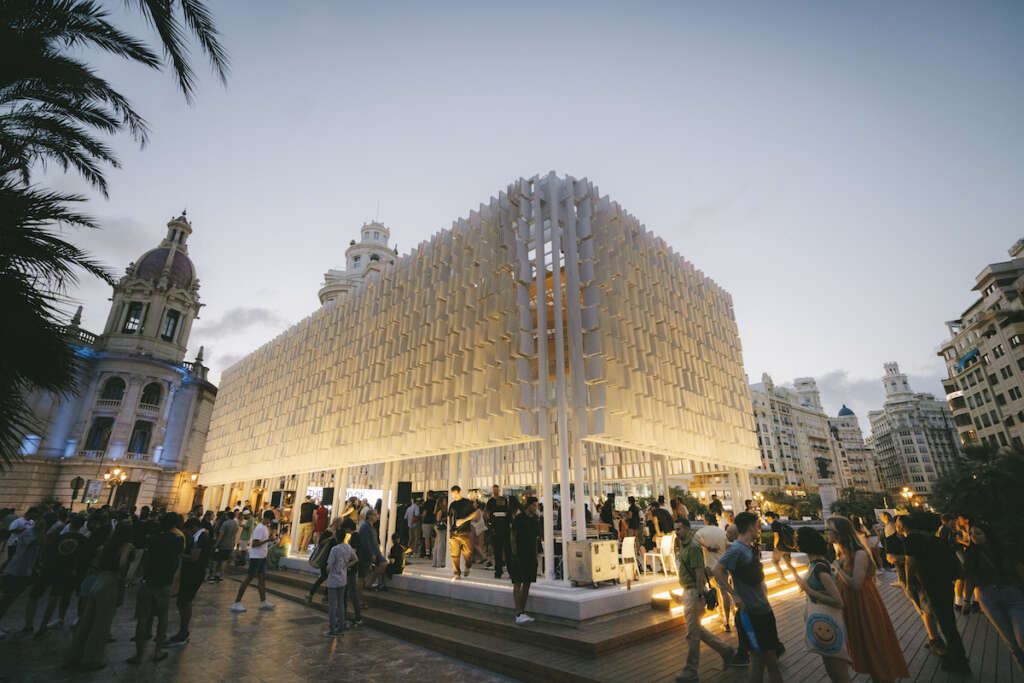
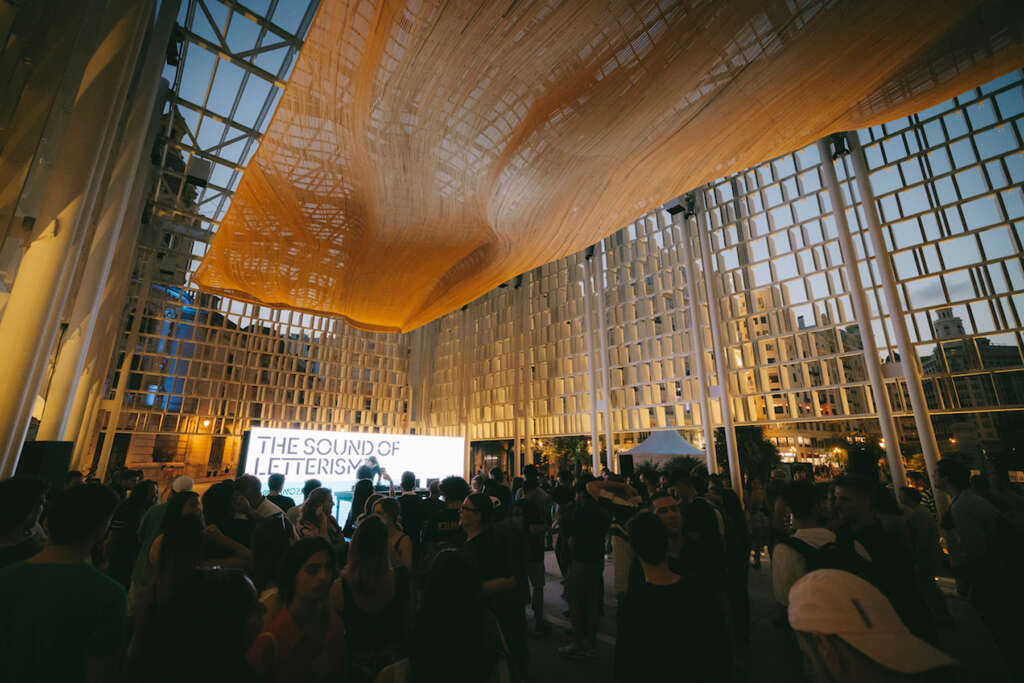
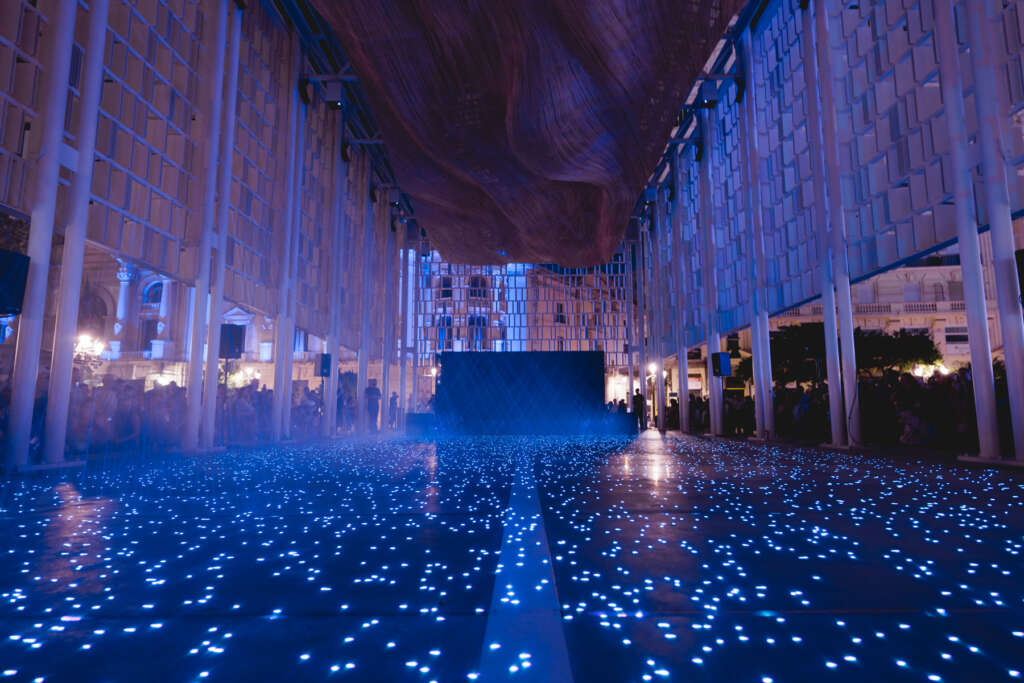
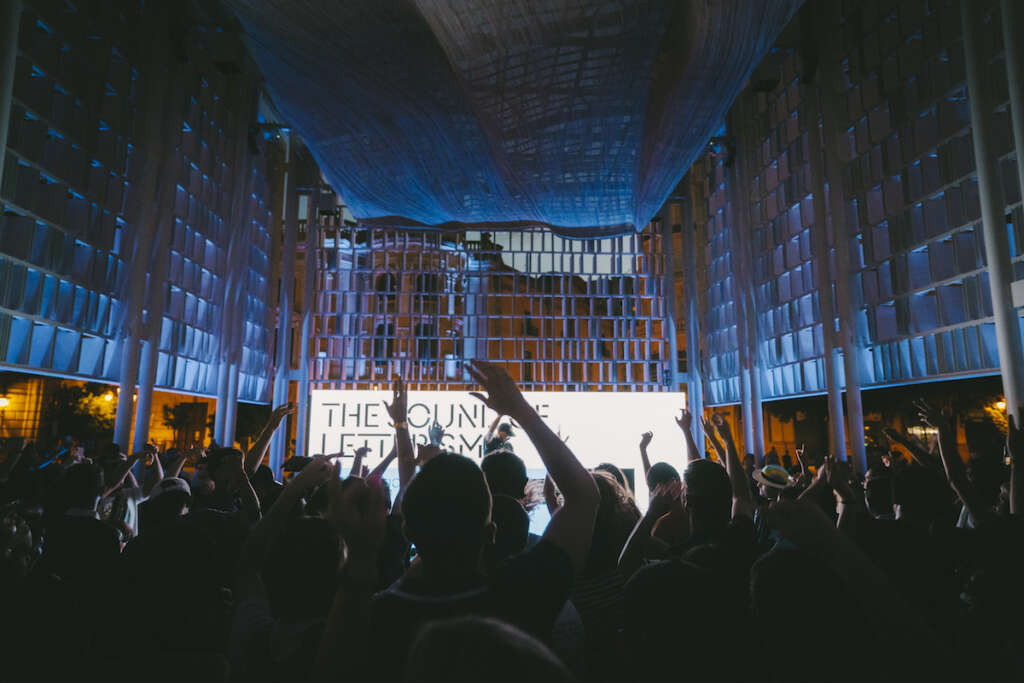
Project Details
- Design and Architecture: Miguel Arraiz + Arqueha
- Counseling: Cosín Estudio
- Structure: Josep Martí
- Construction Company: ATG Desarrollos
- Wood Cover: Manolo García Carpintería Artística
- Skin: Inalco + Wandegar
- Illumination: Radiante Creative Studio
- Visualization 3D y CGI: Quatre Caps


